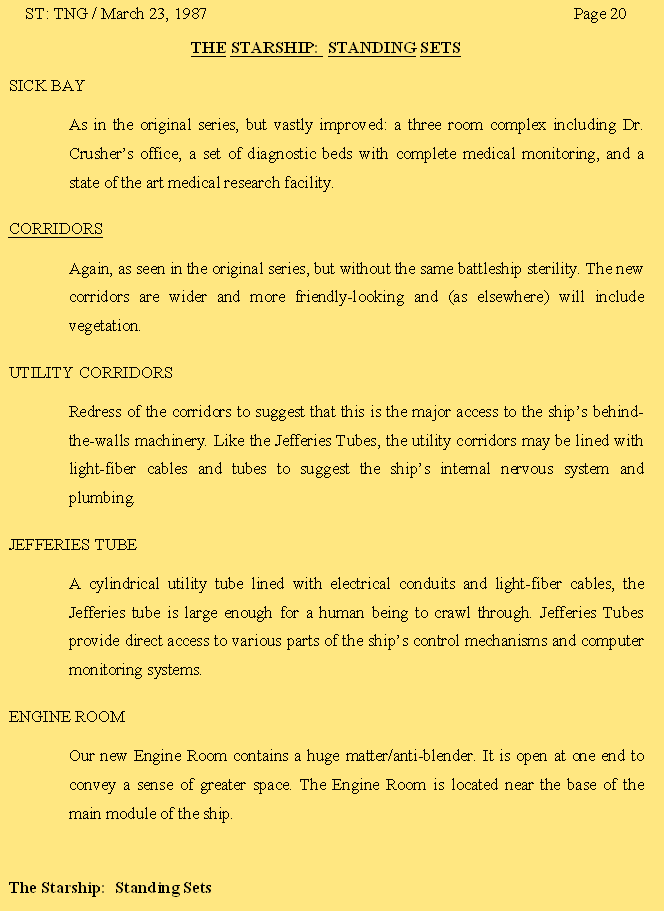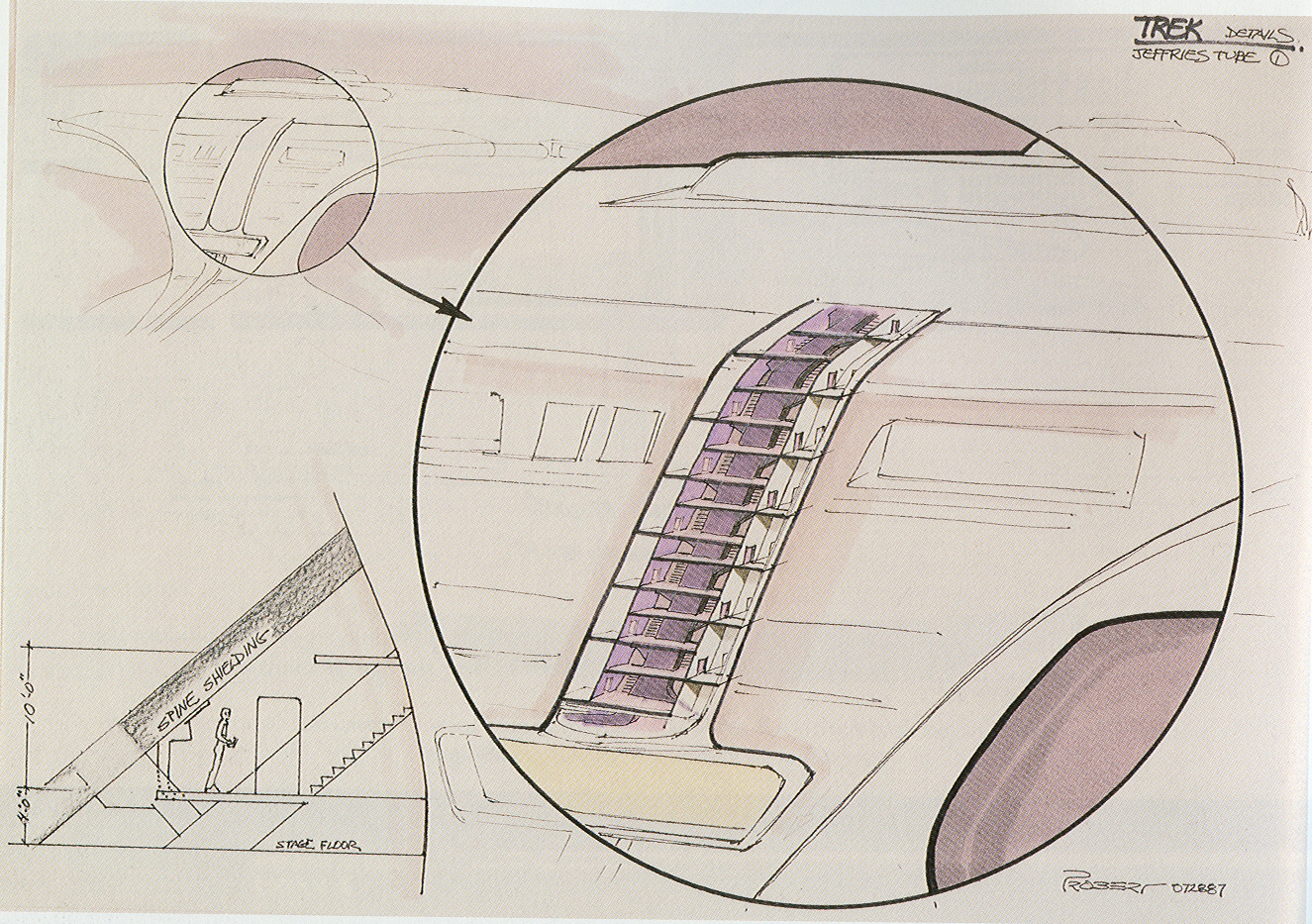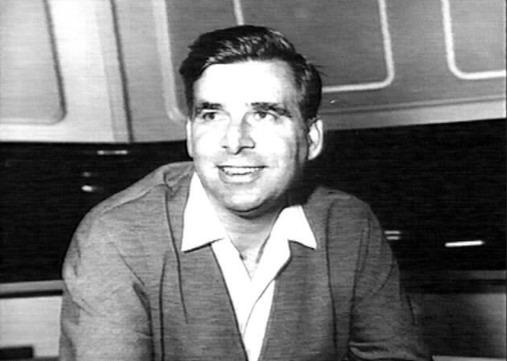
|
· The corridor, engineering, transporter room, and battle bridge sets were derived from the sets originally built for the first four Star Trek movies. A majority of the sets also served as different locations on the Enterprise-A in the fifth and sixth Star Trek films. · The sliding doors were very loud on the show and have been compared to sliding glass doors. The actors were instructed to hold their dialogue until the doors stopped; you rarely will see an actor delivering lines while a door is opening or closing. · When the Enterprise was initially being designed for Next generation, the producers conveniently located a transporter room directly off the main bridge. Gene Roddenberry nixed the idea, saying he wanted the characters to have conversations in the turbolifts before/after embarking on a mission. The original designs for the first movie Enterprise also toyed with the idea of having a single-person transporter on the bridge. · Gene Roddenberry’s original scripts for Next Generation’s premier story, “Encounter at farpoint,” did not include any scenes set in the Enterprise’s engineering room. When he learned that Paramount was therefore refusing to pay to build an engine room set, he revised the scripts to include the engine room.
|
 |

This preproduction sketch by Andrew Probert illustrates a Jefferies tube service spine for the starship, named for the designer of the original Enterprise, Matt Jefferies. The eventual design for the Jefferies tubes were much smaller and scattered throughout the ship.
 |
 |
 |
